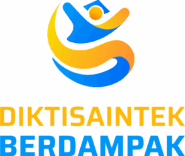A Researcher of IPB Predicts the Production of Cut Flower Chrysanthemum

A researcher of the Department of Agricultural Engineering, Faculty of Agricultural Technology Institutes Pertanian Bogor (IPB), Prof. Dr. Kudang Boro Seminar can estimate the number of chrysanthemum cut flower production. "By using the System Development Life Cycle (SDLC), we created a special software that can predict the need for chrysanthemum cut flower production in the flower-exporting companies in Cipanas West Java," said Prof. Kudang.
This study uses time series to estimate the demand and Monte Carlo simulation to determine the approximate total cost of production for each button of green house in one planting period. This software can be used to predict the number of requests for each variety in one week, the total cost of production, and production facilities needed in one planting period. This Chrysanthemum production planning software uses the inputs or data about the sale of some varieties over the past two years, location, production facilities and production cost of to determine the production of chrysanthemum.
The reason for selecting the object of the research by Prof. Kudang with the IPB Lecturer of Department of Engineering, Dr.Ratna Sari is that the cut flower of chrysanthemum is one of important commodities in the international trade of Indonesian ornamental plants. According to the Central Bureau of Statistics (BPS), in 2003 the trade of these commodities in Indonesia had a surplus of one million dollars. The major Chrysanthemum-producing countries such as Japan and the Netherlands supply only less than 60 %, while the contribution of the chrysanthemum-producing countries in Southeast Asia such as Indonesia is only about 10 % of total world demand. In view of this, the chrysanthemum business opportunity is still very promising.
While it is economically potential, the commodity of chrysanthemum cut flowers has so far faced problems and obstacles in its development. The control of its pests and diseases still depends much on excessive use of pesticide. This has a negative impact on the environment and results in higher production costs. "Improvement in production is needed to help resolve the issue. Therefore, a software that can predict the chrysanthemum production is expected to lower the production cost and minimize the negative environmental impact caused by the excessive use of pesticides," said Director of Communications and Information Systems this IPB.
There are two methods in this software, namely qualitative methods (moving average) and quantitative (exponential smoothing). This software can reduce the error of quantitative estimation up to 8.2 %. This value is better than that of the qualitative forecasting error commonly made by the company, i.e. 15.12 %. This means the quantitative prediction by the software can reduce the error by 50 %. Meanwhile the value of error between the real cost of total production in the company and the total cost resulted from the simulation is 0.92 %, after conversion.
Mr. Kudang, who completed his doctoral degree in the Faculty of Computer Science, University of New Brunswik Canada, suggests that although the moving average method has been proven to have a relatively smaller value of error than that of the qualitative forecasting so far made by the company, the error of 8.32 % still needs further reduction by improving the method of forecasting. "The software in this study is still for the use in a stand-alone computer. Companies are expected to develop this software for LAN (Local Area Network)-based computers or Wide Area Network (WAN) or web-based so that it can be used by the units spread out in several different geographical regions, “said the Chairman of the Association of Indonesian Agricultural Informatics (HIPI).
Further, according to the member of the Asian Federation for Information Technology in Agriculture (AFITA), to maintain the updated data, the software system maintenance is absolutely necessary. The maintenance of software system includes the addition of animation, making monthly reports, modification and addition of new features for easy access and operation of the program. Also, it is necessary to modify the software to meet the needs of users and adjust to the changes in the company. (mtd)



